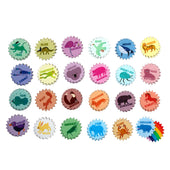Honey bees are fascinating creatures with many interesting aspects! Here are some fun facts about them:
-
Complex Communication: Honey bees communicate with each other using a unique "waggle dance." This dance conveys information about the distance and direction of food sources from the hive.
-
Incredible Flight Speed: Honey bees can fly at speeds of up to 15 miles per hour (24 km/h) and their wings beat about 200 times per second, creating their characteristic buzzing sound.
-
Superorganism: A honey bee colony functions as a superorganism, where individual bees work together to support the entire hive. The colony has a division of labor, with worker bees taking on various roles such as foraging, nursing, and guarding.
-
Honey Production: To produce just one pound of honey, bees must visit around 2 million flowers and fly over 55,000 miles. A single worker bee produces about 1/12th of a teaspoon of honey in her lifetime.
-
Queens Live Longer: The queen bee, the only reproductive female in the hive, can live for several years, much longer than worker bees, which usually live only a few weeks to a few months.
-
Vital Pollinators: Honey bees are essential pollinators, responsible for pollinating about one-third of the food crops we consume, including fruits, vegetables, and nuts.
-
Unique Navigation: Honey bees use the position of the sun and polarized light patterns in the sky to navigate and find their way back to the hive, even on cloudy days.
-
Social Structure: A honey bee colony consists of a single queen, thousands of female worker bees, and a few hundred male drones. The drones' only purpose is to mate with a queen, after which they die.
-
Thermoregulation: Honey bees maintain the hive's temperature by clustering together and vibrating their wings to generate heat or by fanning air with their wings to cool it down.
-
Bee Vision: Honey bees can see ultraviolet light, which helps them locate nectar-rich flowers. However, they cannot see the color red.
These facts highlight the incredible abilities and importance of honey bees in our ecosystem!









